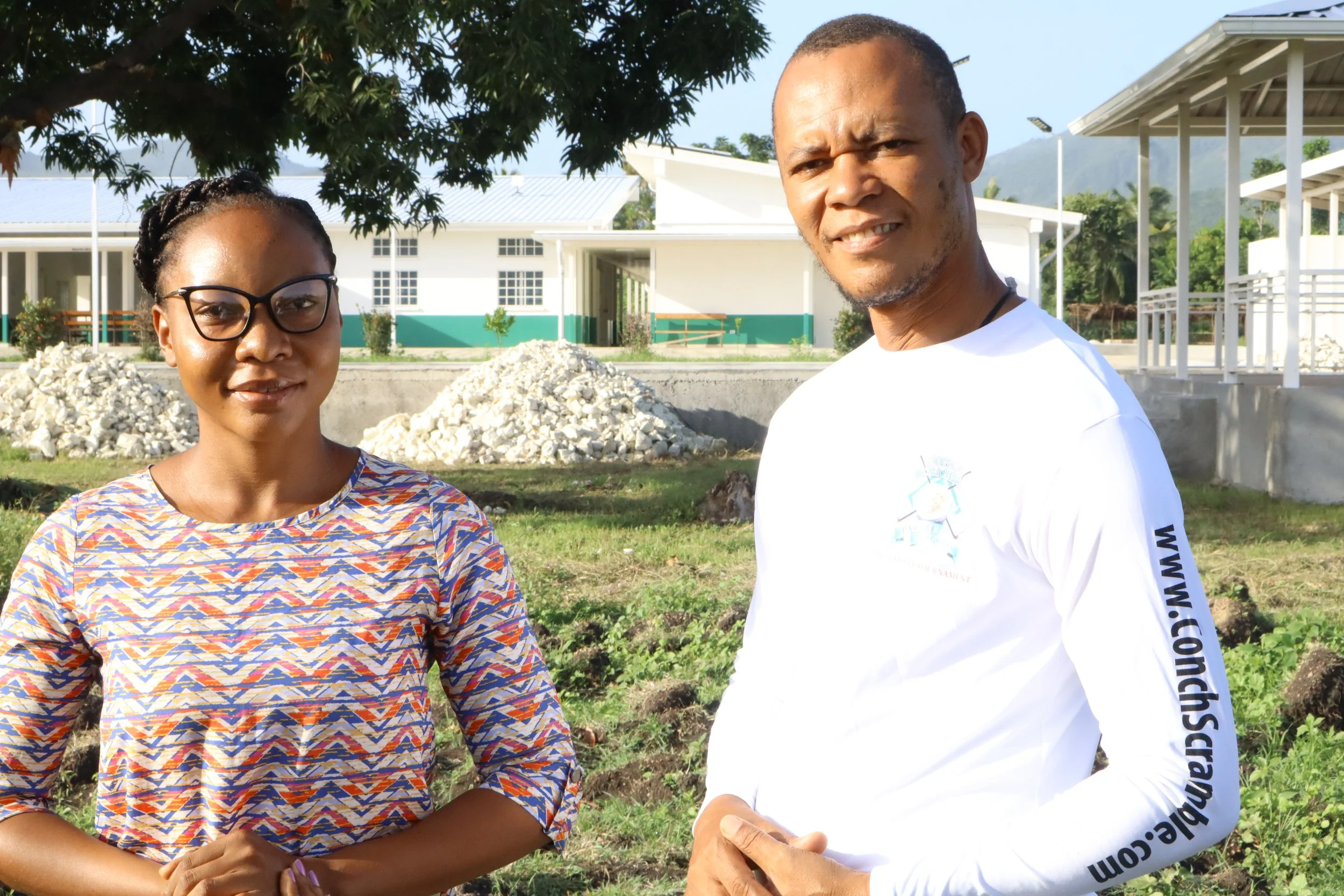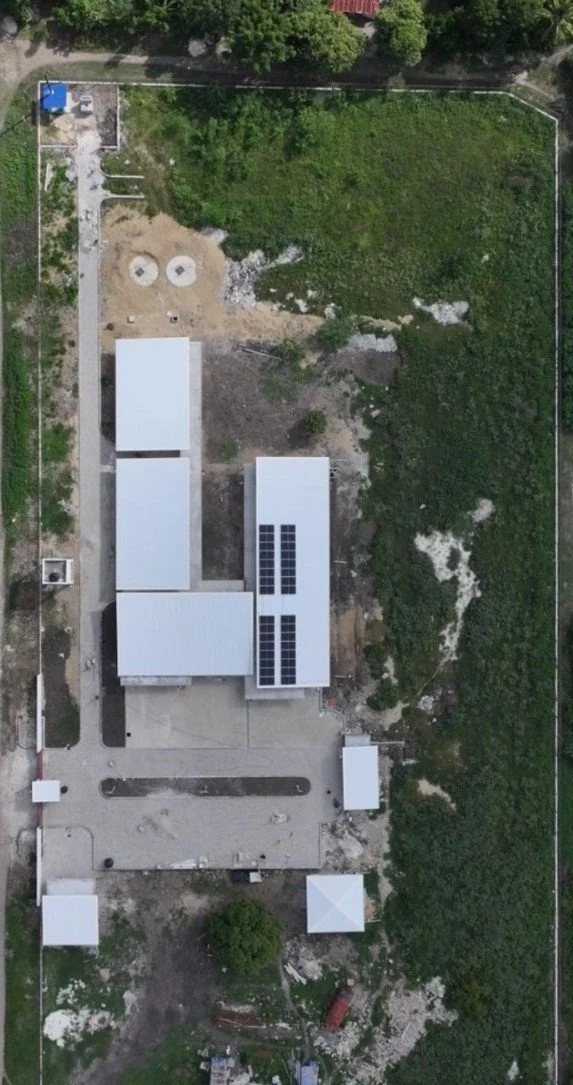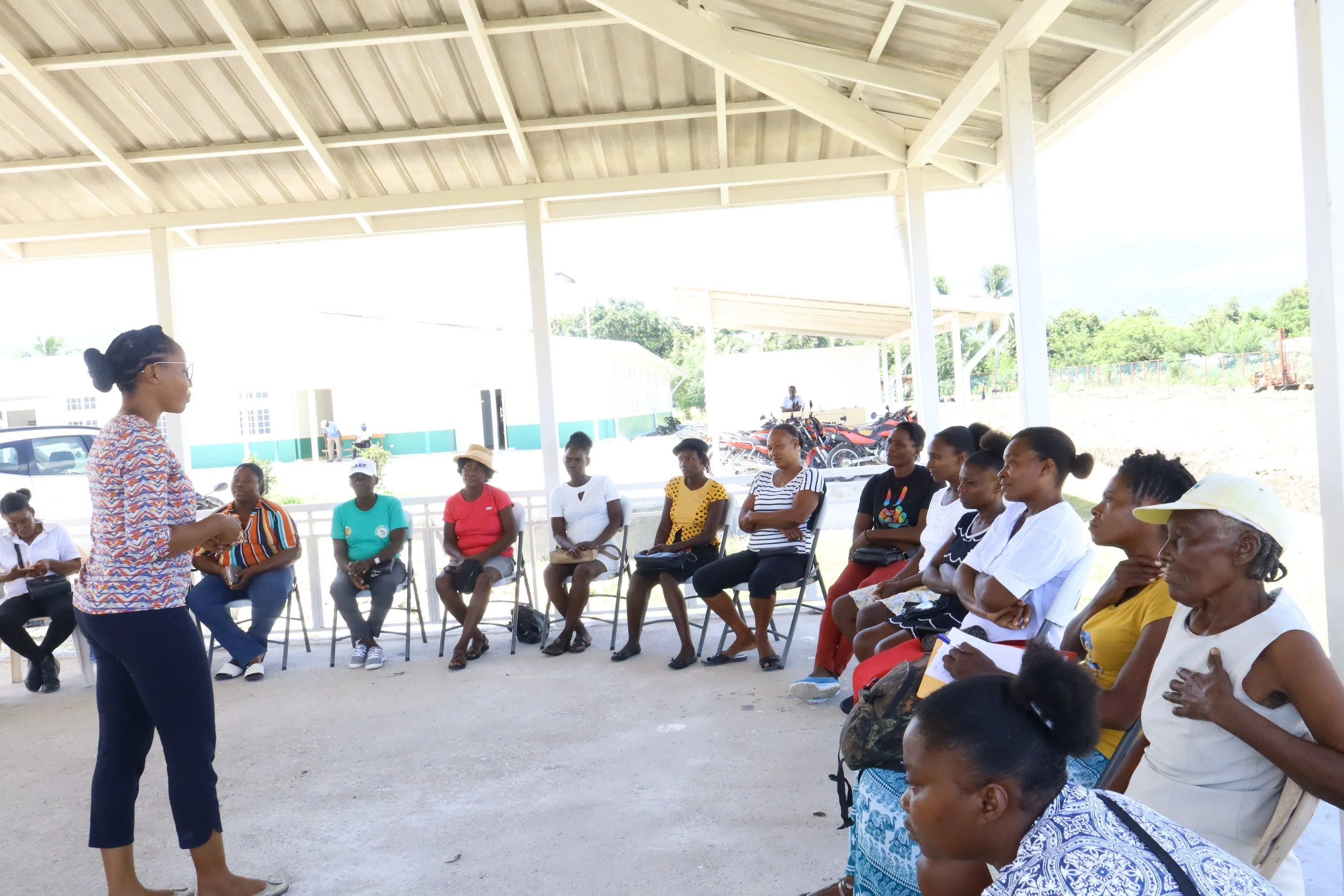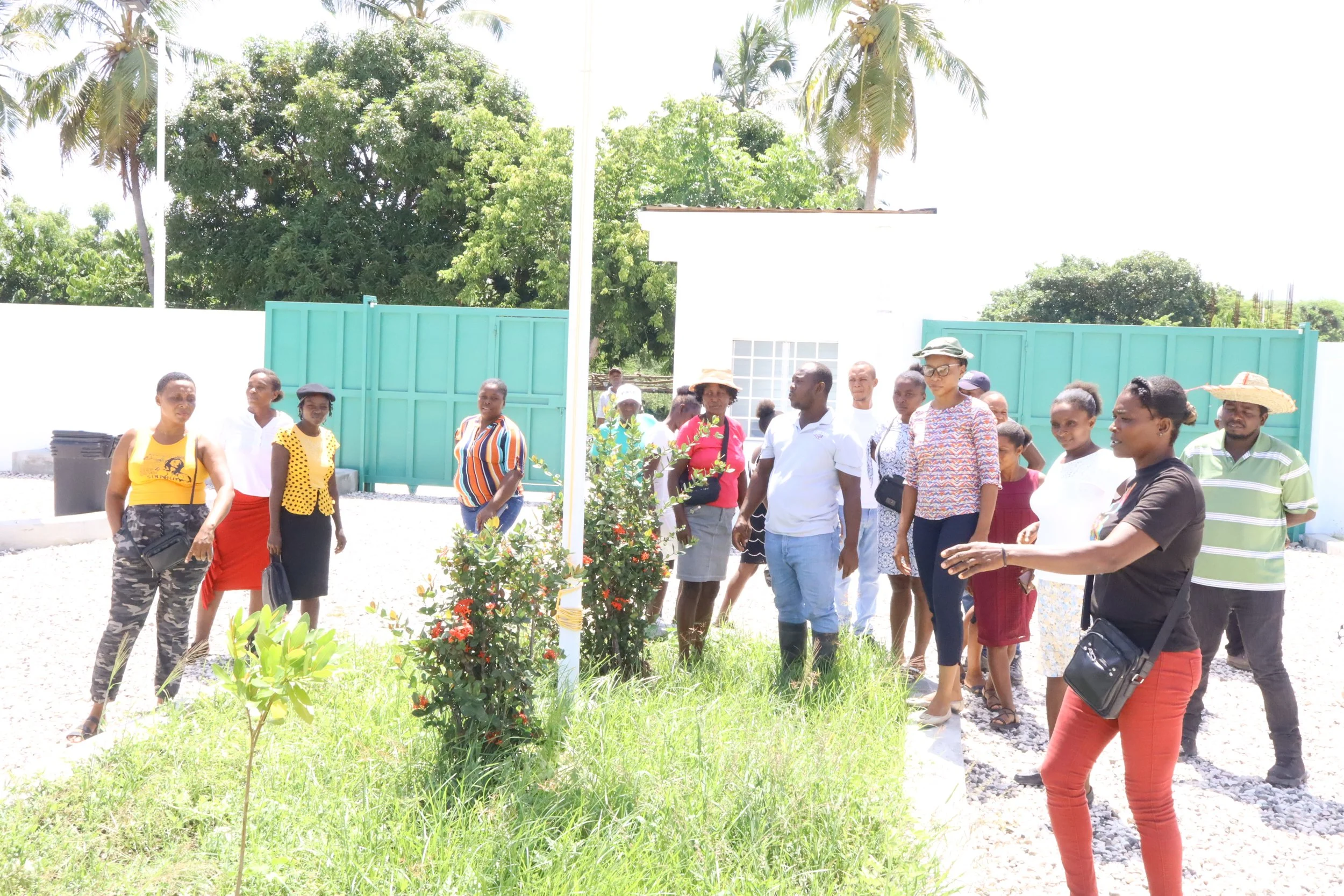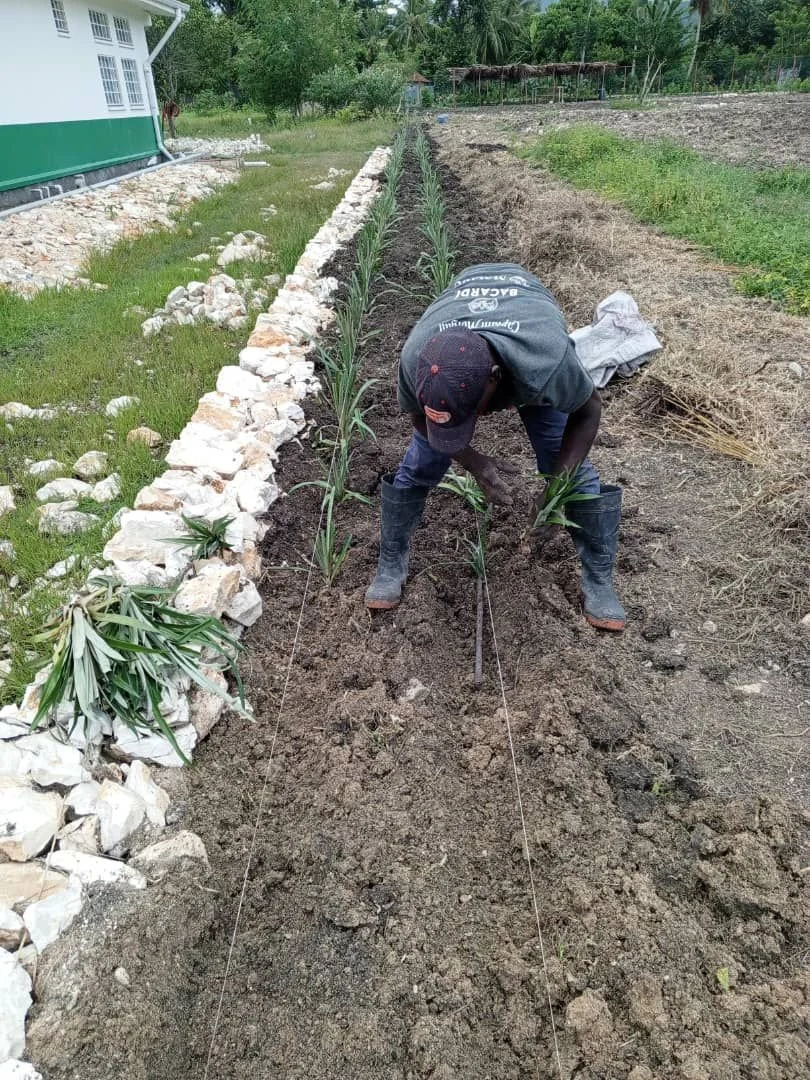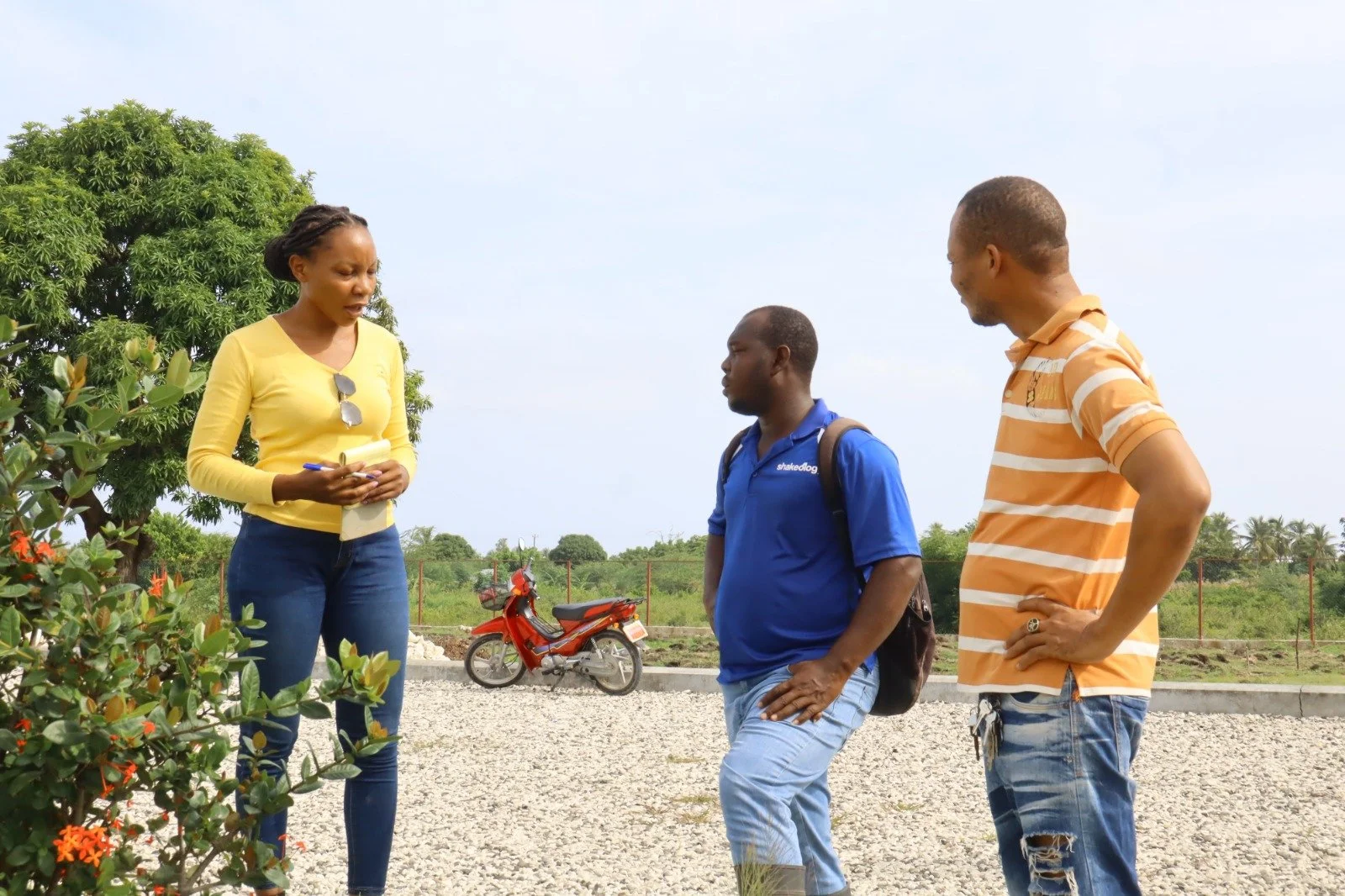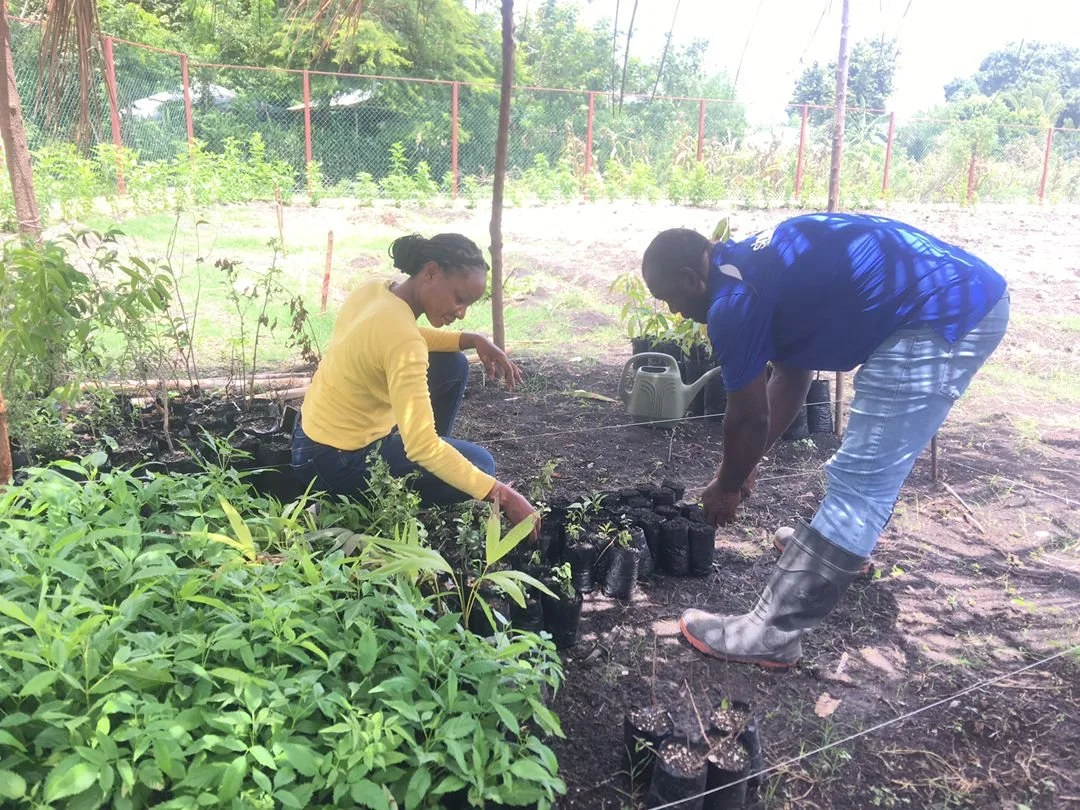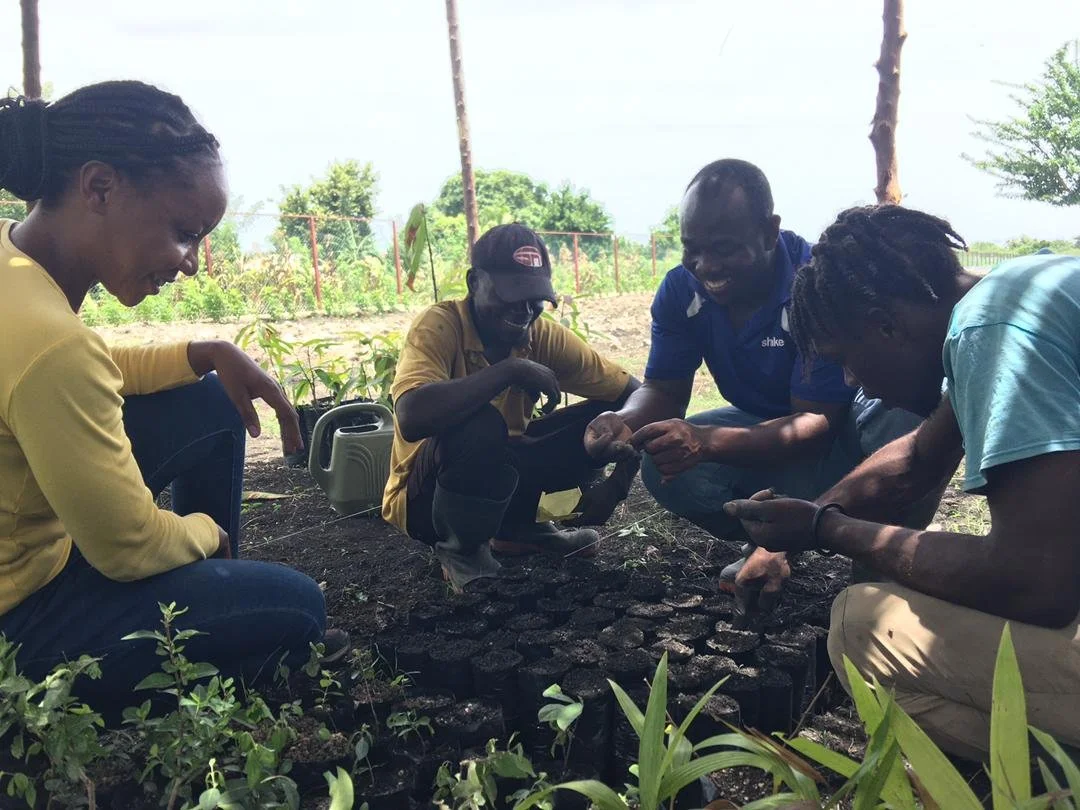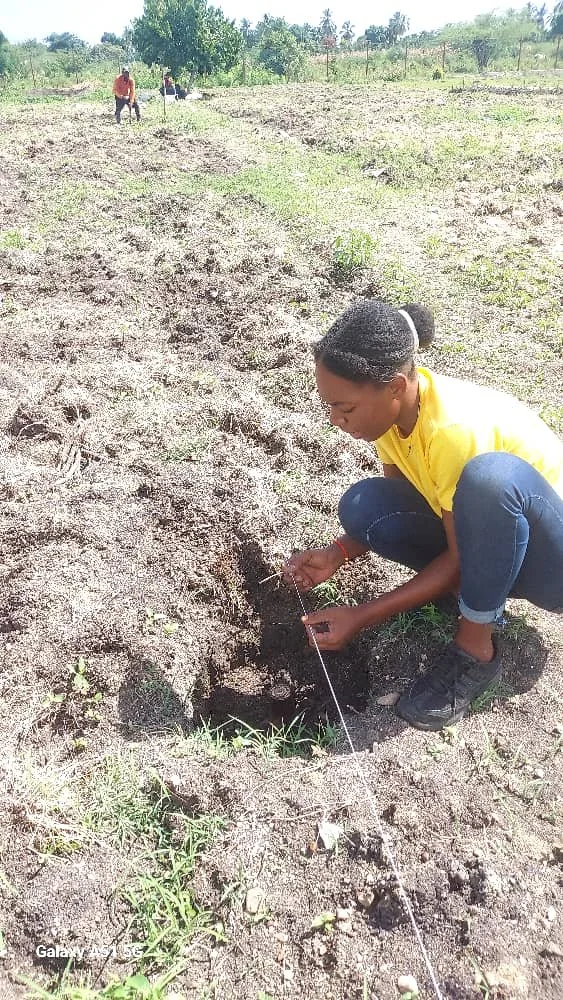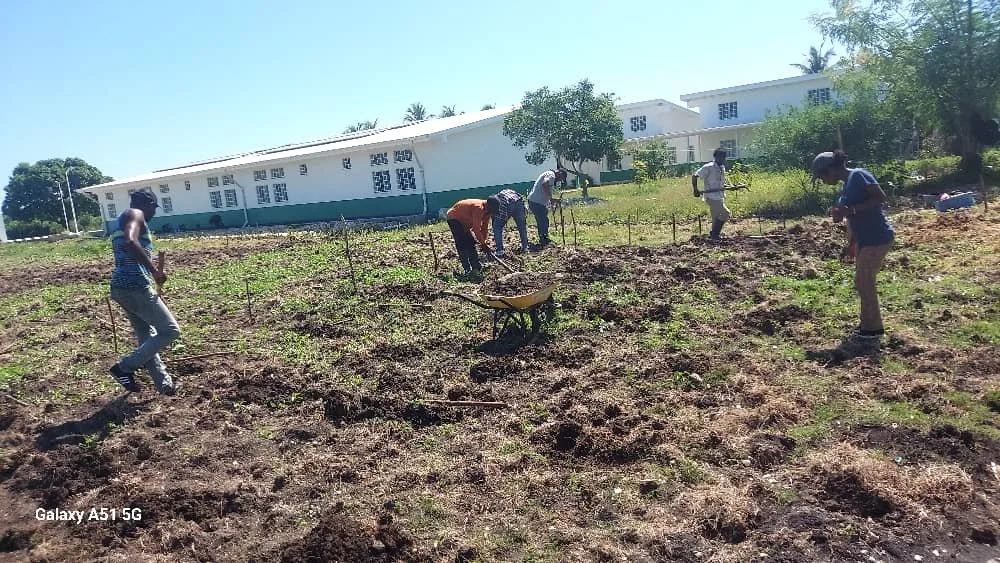From Building Health to Growing Health: Why Our New Hospital Has a Farm
In Colorado, many of us are passionate about where our food comes from. But if we can't make it to the farmer's market, or if the raised beds in the yard have a tough year, our solution is simple—run to the grocery store.
In rural Haiti, there's often no fallback plan. It's healthy local food, or hunger. And so when we began planning the community hospital in Petit Trou, we knew we wanted the facility to do more than treat illness—we wanted to build an approach to both health and nutrition through a holistic, community-driven model. We can't talk about health without addressing nutrition, and we can't meaningfully address nutrition without reinforcing the local food system.
The Approach
Locally Haiti has supported both health and agriculture for decades, but in 2020, when Covid reached Haiti, our local leadership piloted a program that leaned into the intersection between the two. The program, largely funded by our partners at Direct Relief and designed by Raphael Fernandez Salvador, a local agronomist, provided Community Health Workers with seeds, tools, plant starts, and materials for agricultural training while simultaneously sharing locally sewn masks and up-to-date information on the Covid pandemic. (See here for a video we made at the time that described that approach.)
The program, called the Maryaj (the marriage between health and agriculture), was an incredible success, touching over 1,800 families and family gardens. This program has continued, with trainings highlighting the nutritional qualities of various local plants and through support for selected demonstration gardens in the region. But until recently, the program lacked a home—a place for experimentation, production, and training.
Now, the hospital garden, a 1.6-acre space surrounding the facility, is providing that base. In the past two months, thanks to support from Boulder Rotary Club, we've planted 532 pineapple trees, 336 plantain trees, 174 melons, and nearly 1,100 flowering bushes that enhance soil health while creating beauty across the campus. There are also mango, avocado, cherry, and lime trees started on site, and our team is almost ready to begin planting vegetable garden parcels.
In addition to the trees and shrubs already planted, the team is focusing on starting plants from seed and propagating flowering bushes and shrubs that provide beauty while enhancing soil health. Simon and the team have also established two composting sites on campus, turning organic waste into rich soil amendments. And finally, planning for a comprehensive medicinal garden is well underway.
The Team
We're thrilled to have engaged Pierrette Decime, former head of research at the Botanic Garden in Les Cayes. Pierrette joined our team after USAID cuts eliminated funding for her work. She has been an enormous asset to our team—combining a rigorous, detail-oriented approach with impressive soft skills and deep knowledge of participatory methods of engagement. Pierrette has visited the garden for roughly one week per month over the past four months and has played a lead role in planning and development.
The local team is led by Agronomist Simon Bertrand and Agronomist Yves Michel Laurent, along with support and leadership from Patrick Desir, Lisson Michel, and Juto Mactine. In addition, thanks to a connection made by Agronomist Yves, we currently have 17 interns from the agriculture school in Anse a Veau engaging on site, plus a local intern, Roodens, who is participating during his summer break from agronomy studies in Les Cayes.
One of the most inspiring parts of the planning and planting process has been the interchange and bidirectional learning taking place between Pierrette, Simon, and Yves. Like any farming endeavor, the team has faced challenges and decisions, but seeing this group share ideas and seek solutions at the intersection of deep, generational local knowledge and science-based best practices has been remarkable.
How can we avoid pests while keeping the farm organic? What plants are best for soil health and conservation? Which tree varieties are most resilient to wind and potential hurricanes? What are the most appropriate medicinal plants for the local context? Like everything we strive to do, these decisions have been rooted in community knowledge and enhanced through dialogue and research.*
Looking Forward
Our team believes that this 1.6-acre plot adjacent to our hospital will be small but mighty—creating ripples throughout the region. Local farmers are donating trees and sharing knowledge, excited to be part of something transformative. Community Health Workers are participating in on-site training and playing an active role in planning and execution. University students are gaining hands-on experience that will shape how they think about development work. Patients and families who visit the site are asking for more information, suggesting new topics for education, wondering when the fruit trees will begin bearing fruit.
In the weeks and months to come, patients walking into our hospital will see green, beauty, and abundance on site. And with time, they'll be invited to learn and participate. That's not an accident—it's a vision of health that starts with the ground beneath our feet and grows into something that can sustain a community for generations.
This initiative is proving that sometimes the most innovative approach is the most fundamental one: good health grows from good soil, strong communities, and the wisdom to see connections that were always there. And the model we're piloting in Petit Trou is designed to grow and spread, just like the seeds we're planting.
*Special thanks to CU Berkeley MPH Candidate, Brook Lyn Mercado, and Denver University Korbel School Masters’ Candidate Adam Dettmer for their participation and research at distance. We’re grateful for your engagement and support!

